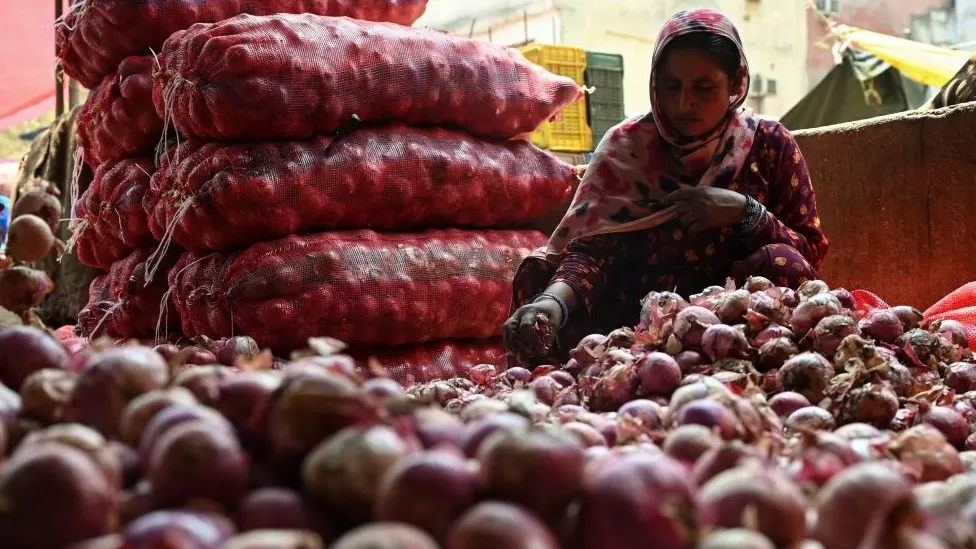Why India’s soaring food inflation is a global problem

In the domestic market, onion prices have risen by a quarter since June, just as tomato prices are cooling. Dal (lentil soup) is now around 20% more expensive than it was at the beginning of the year because pulses that go into making it are now around 20% more expensive.
In July alone, the cost of a regular vegetarian meal in India increased by a third, according to some economists.
In anticipation of key state elections this year and a big general election next summer, the Indian government has taken a number of measures to reduce food inflation.
Last month, India abruptly stopped exporting non-basmati white rice following a ban on wheat in May 2022. Recently, the finance ministry imposed a 40% tariff on onions to discourage exports and improve domestic supplies.
As sugar production is expected to decrease this year, “the likelihood of a ban on sugar exports has also increased”, says Rajni Sinha, chief economist at CareEdge Group.
Analysts say the government could take further measures in response going forward. In a recent note, Nomura said that since rice export restrictions have not yet lowered domestic rice prices, “the government may seek a more comprehensive ban.”.
Does India, with its aggressive defense of domestic prices, run the risk of exporting food inflation? According to the International Food Policy Research Institute (IFPRI), it does, particularly with rice, sugar, and onions. In the past decade, India has become the world’s largest rice exporter, holding a 40% share, and the second largest sugar and onion exporter.
In July, the FAO’s Rice Price Index jumped by 2.8% – its highest level since September 2011 – driven primarily by price increases in the Indica variety of rice, whose exports India banned. FAO said this has increased “upward pressure” on rice prices from other regions.
According to Joseph W Glauber, senior research fellow at IFPRI, Thai rice prices have increased 20% since the ban was announced late last month.
Food insecurity is deteriorating in 18 “hunger hotspots” identified by the FAO and UN’s World Food Programme, with devastating consequences for the world’s poor.
Millions of people in Asia and Africa consume a large amount of rice as part of their staple diet. These markets are largely supplied by India.
IFPRI estimates that 42 countries in Asia and Sub-Saharan Africa import 50% of their total imports from India, which can reach 80% in some countries, and this share cannot be easily replaced by imports from other large exporting countries like Vietnam or Thailand.
In addition to keeping food import bills high, elevated global food prices may also cause these countries to use precious foreign exchange, “thereby worsening balance of payment problems and contributing to inflation”, according to Upali Galketi, senior economist at FAO’s markets and trade division.
However, India cannot be solely blamed for the rise in global food prices. Another major contributing factor is the termination of the Black Sea Grain Initiative following Russia’s invasion of Ukraine.
